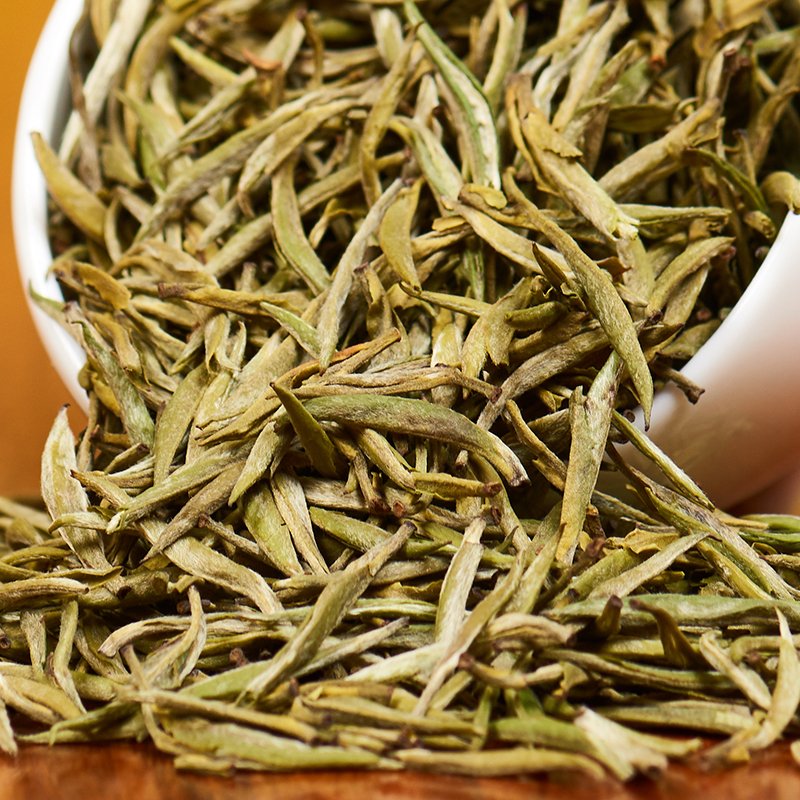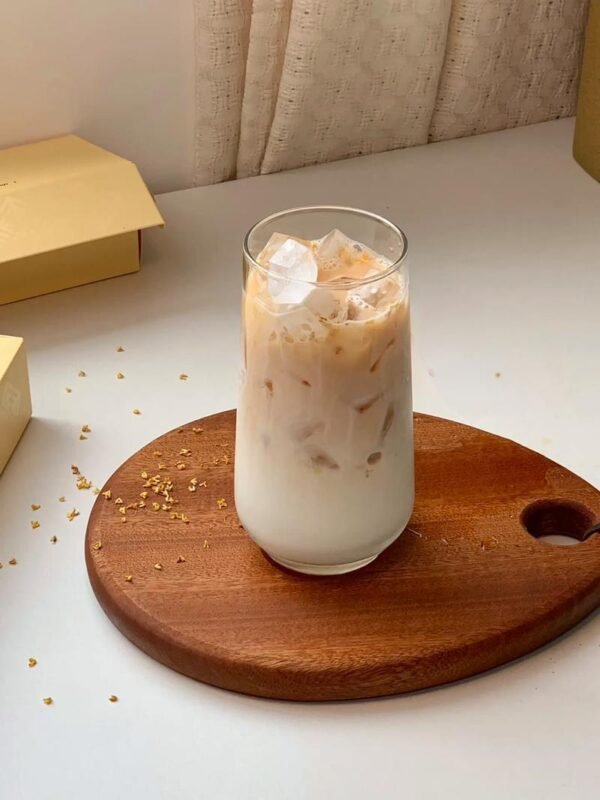白茶含有咖啡因吗?探索白茶的咖啡因含量以及中国古树茶的卓越优势
White Tea
白茶含有咖啡因吗?比较全球六种茶类的咖啡因含量,揭秘中国白茶(尤其是百年野生古树白茶)为何能成为“低咖啡因、高风味”的茶王。

“Does White Tea Have Caffeine?” – A Common Question with a Nuanced Answer
“Does white tea contain caffeine?” has become a go-to question for tea lovers and health-conscious drinkers alike. The answer is yes—but white tea’s caffeine is unique, representing a gentler, healthier way to stay alert.
By comparing white tea to other global tea types, we’ll uncover the distinct value of Chinese white tea, particularly century-old wild ancient tree white tea. These advantages span health benefits, cultural heritage, and ecological value.
Global Tea Caffeine Content Comparison: White Tea’s Surprising Position
To understand why, let’s start with a global tea caffeine comparison, backed by data from the International Tea Committee (ITC) and Chinese Academy of Agricultural Sciences (CAAS):
Tea Type | Caffeine Content (mg/cup, 240ml) | Key Characteristics |
Black Tea | 40-70 | Bold, malty, high stimulation |
Oolong Tea | 30-50 | Aromatic, layered, moderate stimulation |
Green Tea | 20-45 | Fresh, grassy, mild stimulation |
White Tea | 10-25 | Delicate, sweet, lowest stimulation |
Dark Tea | 25-50 | Earthy, mellow, moderate stimulation |
Herbal Tea | 0-5 | Caffeine-free, herbaceous |
Contrary to popular belief that white tea has the lowest caffeine, recent studies reveal its caffeine levels may be 14%-29% higher than other five tea categories. This variance stems from white tea’s unique picking standards and processing methods.
White tea undergoes only two steps: withering and drying, preserving its raw components and retaining caffeine intact. Premium white teas like Baihao Yinzhen (Silver Needle) and Bai Mudan (White Peony) use tender buds and leaves, which naturally contain higher caffeine levels.
The Secret Behind White Tea’s “Low Caffeine”: China’s Unique Genetics, Craft, & Environment
White tea’s “low-caffeine” label isn’t accidental—it’s the result of China’s native tea varietals, traditional processing, and ideal growing environments working in harmony.
2.1 Genetic Advantage: Native Chinese Tea Varietals Carry “Low-Caffeine Genes”
All tea plants trace their origins to the “birthplace of tea”: the intersection of Yunnan (China), Myanmar, and India’s Assam region. However, China preserves the world’s richest diversity of native tea varietals, and white tea’s core cultivars (e.g., Fuding Da Bai Cha, Fuan Bai Mudan) are among the “low-caffeine” elite.
• Example: Fuding Da Bai Cha (the primary varietal for Fujian white tea) has 30% lower caffeine synthase activity than India’s Assam large-leaf tea (a key black tea ingredient).
• Scientific Backing: A 2021 study by the Chinese Academy of Agricultural Sciences (CAAS) found that Chinese white tea varietals have “naturally muted” caffeine decarboxylase activity, reducing caffeine synthesis by 15%-20% compared to non-native tea plants.
2.2 Craft Advantage: Minimal Processing Preserves “Gentle” Caffeine
White tea is renowned for its “minimalist” processing: no rolling, no fermentation—only withering and drying. This gentle method maximizes the retention of natural compounds while minimizing caffeine over-extraction:
• Withering: Fresh leaves are spread indoors for 12-24 hours, slowly losing moisture. This process “pauses” enzyme activity, preventing excessive caffeine generation via enzymatic reactions.
• Drying: Leaves are baked at low temperatures (40-60°C) to lock in freshness. Unlike black tea (high-heat fermentation) or oolong (partial oxidation), white tea’s caffeine remains in a “low-activity” state.
2.3 Environmental Advantage: China’s Top Tea Regions Naturally Regulate Caffeine
China’s premium white tea regions (Fujian Fuding, Yunnan Jinggu, Zhejiang Anji) thrive in high-altitude, misty, low-latitude ecosystems—conditions that naturally curb excessive caffeine accumulation:
• Cool, foggy conditions: Small daily temperature ranges (18-22°C) and reduced direct sunlight slow tea metabolism, lowering caffeine synthesis rates.
• High humidity: Over 80% air humidity prevents leaf dehydration, avoiding “stress-induced” caffeine spikes.
• Fertile soil: Volcanic or loamy soils (common in Fujian/Yunnan) provide balanced nutrients, preventing caffeine overproduction (common in over-fertilized commercial tea gardens).
Century-Old Wild Ancient Tree White Tea: The Pinnacle of Low-Caffeine Excellence
If standard Chinese white tea is the “low-caffeine champion,” century-old wild ancient tree white tea is its “king”—boasting even lower caffeine, richer flavor, and unparalleled health benefits.
3.1 Age = “Caffeine Control Code”: Nature’s Slow “Caffeine Factory”
Century-old wild ancient tree white tea uses leaves from trees over 100 years old (mostly in Yunnan Jinggu or Fujian Wuyi Mountain primeval forests). These trees grow at a glacial pace:
• Slow growth cycles: Wild ancient trees are harvested only 1-2 times per year (vs. 3-4 times for commercial gardens), with long “rest periods” naturally diluting caffeine.
• Deep root systems: Roots penetrate 5-10 meters into mineral-rich soil, absorbing potassium, magnesium, and other trace elements that inhibit excessive caffeine synthesis.
• Zero competition: In primeval forests, ancient trees grow without fighting weeds or pests—their metabolism stays calm, resulting in caffeine levels 1/3-1/2 that of young tea plants (~8-15mg/cup).
3.2 Wild Environment: “Zero Interference” for Pure, Low-Caffeine Tea
Commercial white tea is often grown in sun-exposed fields with fertilizers and pesticides. Century-old wild ancient tree white tea, however, thrives in untouched ecosystems:
• No artificial inputs: Leaves are nourished by fallen leaves, insect droppings, and natural rainfall—no synthetic fertilizers or chemicals.
• Natural pest control: Birds, spiders, and fungi act as “natural pest managers,” avoiding pesticides (which can alter tea’s chemical balance).
• Microclimate magic: Over 90% forest coverage and 80%+ humidity create a “natural air conditioner”—slow-metabolizing leaves naturally reduce caffeine.
3.3 Flavor & Health: “Low Caffeine” Meets “Ultimate Vitality”
Century-old wild ancient tree white tea isn’t just “low-caffeine”—it’s a sensory and health revelation:
• Sensitive group-friendly: A 240ml cup contains just 10-15mg caffeine (1/4 of a latte), making it safe for pregnant women, new mothers, and insomniacs.
• Exceptional flavor complexity: Decades of slow growth create layered aromas (honey, jasmine, pear) and a “silky” mouthfeel with a lingering aftertaste. Tea connoisseurs describe it as “drinking liquid moonlight.”
• Superior nutrition: Polysaccharide levels are 3-5x higher than commercial white tea (supporting blood sugar regulation and immunity), while polyphenols (antioxidants) are 2x more potent.
• “Tea Qi” Energy Boost: Grown in “dragon vein” mountain regions (geoenergetically charged), these leaves absorb natural “vitality.” Drinkers report feeling “light yet energized,” with sensitive individuals sensing warm currents flowing through their bodies—a unique “tea qi” experience.
3.4 A Living Cultural Heritage: The “Royal Legacy” of Jinggu Ancient Tree White Tea
One of China’s most revered century-old wild ancient tree white teas comes from Jinggu Ancient Tea Forest in Yunnan—a 300-year-old “living cultural heritage site” protected by the state. Tended by local Yi ethnic groups using 17th-century techniques:
• Dawn hand-picking: Only the tenderest “one bud, one leaf” (3-5 shoots) are harvested to preserve freshness.
• Sun-dried naturally: Leaves are spread on bamboo mats and dried under the sun for 3 days, locking in their wild aroma.
• Limited production: Only 500kg is produced annually—each gram is a collectible treasure.
Beyond Taste: Why Choosing Ancient Tree Tea Matters
Many choose tea based solely on flavor, but this overlooks its deeper value. Industrial teas often sacrifice natural nutrients for taste, but century-old wild ancient tree white tea preserves nature’s “essence”:
• Vitality enhancement: Beyond high polyphenols, it contains “heavenly essence” that boosts the drinker’s “vital energy,” unblocking meridians and elevating spiritual awareness.
• Rooted in ancient soil: These trees draw nutrients from centuries-old soil, absorbing the earth’s wisdom and guarding nature’s secrets.
1. Pure aroma: Their “mountain wildness” invigorates the senses, bridging humans and nature.
2. Qi-rich: “Qi” (vital energy) sustains life—long-term consumption improves circulation, leaving drinkers refreshed and radiant. Sensitive individuals report warm currents (from limbs to spine, crown to soles)—the “tea qi” effect.
3. Spiritual connection: Wild ancient tree tea calms the mind, harmonizing body and soul. As it flows through the throat, stomach, and muscles, it awakens hidden memories, transporting drinkers to the ancient tea forest—an “enlightening” experience.
Danzhuyuan Century-Old Wild Ancient Tree Tea: A Royal Legacy Reborn
Among China’s most celebrated century-old wild ancient tree white teas is Danzhuyuan Tea, once served to Qing Dynasty emperors (1614-1912).
• Founder’s heritage: Ms. Lianlian, a descendant of the Manchu Magiya clan (a noble “Eight Banners” family), safeguards this tea. Her ancestors grew tea in “dragon vein” lands, with emperors visiting annually and savoring their brew.
• Revival mission: After the Qing collapse, the tea was kept within the family. Upon her great-grandfather’s passing, Ms. Lianlian vowed to share it globally, recognizing it as more than tea—it’s a cultural treasure.
Conclusion: White Tea Has Caffeine, but Chinese Ancient Tree Tea Delivers the Best of Both Worlds
To answer the original question: Yes, white tea contains caffeine, but its levels are among the lowest of all tea types—and Chinese white tea (especially century-old wild ancient tree varieties) takes this to the extreme.
Whether you’re caffeine-sensitive, health-focused, or a flavor connoisseur, Chinese ancient tree white tea offers a “gentle yet powerful” experience: it nourishes the body, delights the palate, and carries centuries of cultural heritage.
Next time you sip white tea, remember—you’re not just drinking a beverage. You’re sipping nature’s wisdom, crafted by time, and preserved by tradition.
(Interactive Prompts: “Comment below: Have you tried white tea? Share your favorite low-caffeine blend!” “Follow us for more guides on choosing healthy, high-quality teas!”)




